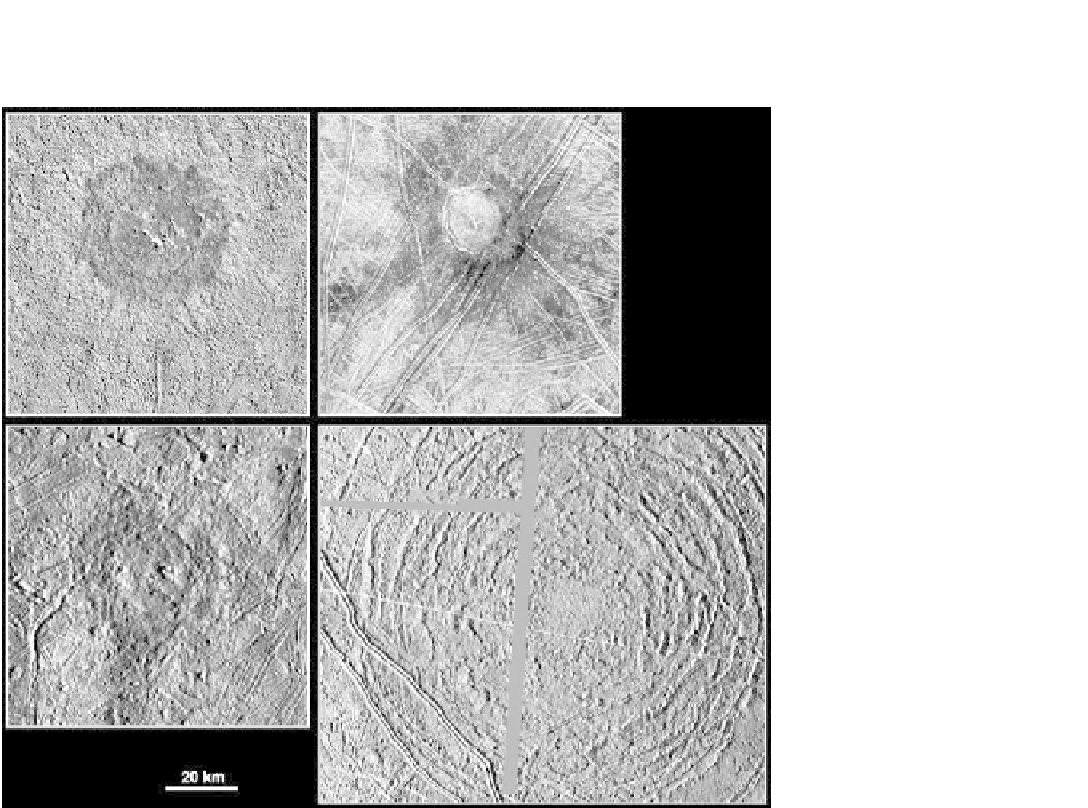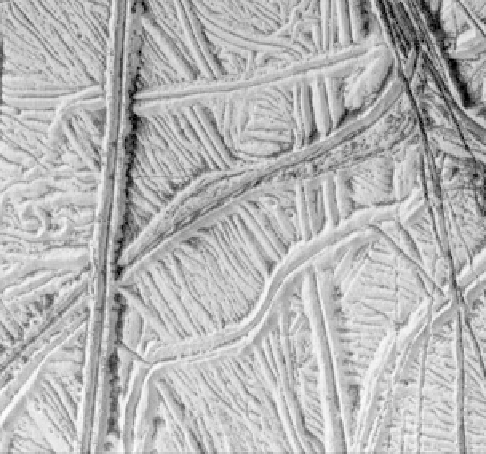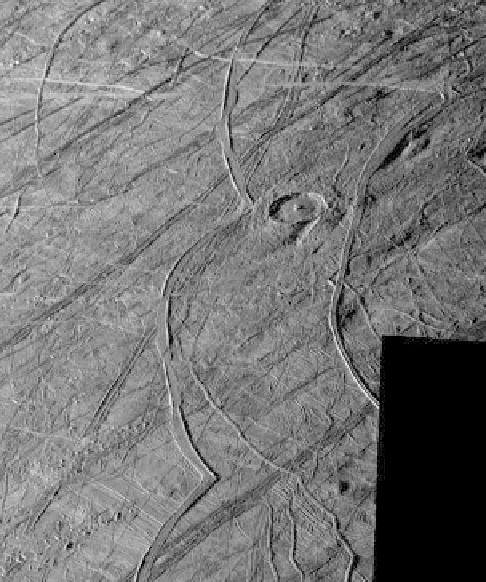Geology Reference
In-Depth Information
Figure 8.18. Impact structures
on Europa: upper left is Pwyll
crater; upper right is Cilix and its
dark ejecta, central peak, and
wall terraces; lower right shows
concentric ring fractures of
crater Tyre, the ridge system
that post-dates the formation of
the crater, the bright linear
fracture that cuts across the
crater, and the ridges (the gray
bands are gaps in the image
data); lower left shows crater
Manannán (the scale bar is
common to all four images)
(NASA Galileo PIA01661).
Figure 8.19. Europa
s icy plains, seen here in high resolution, consist
of complex, intertwining ridges, many of which occur in pairs. The
youngest ridges cut across older features, tend to be dark, and stand
higher than the surrounding terrain. The ridge-pairs are separated
by narrow troughs. The straight, dark ridge-pair (left) is ~1.5 km
wide. Ridges may be places where warm ice squeezed through
fractures. The area shown is 20 km wide and is on Europa
'
'
is anti-
Figure 8.20. Cycloidal ridges result from tidal deformation of
Europa
jovian hemisphere (NASA PIA01178).
80 km long; also
shown is a central peak-crater between the cycloidal ridges (NASA
Galileo 15ESREGMAP02).
'
is icy shell; each arc in the
“
cycloid
”
is 50
-




